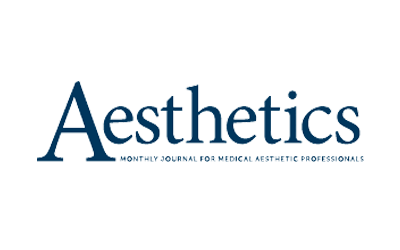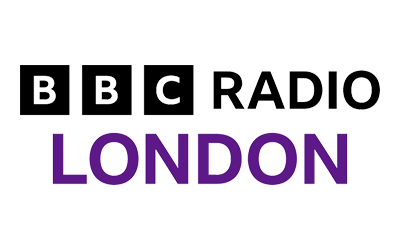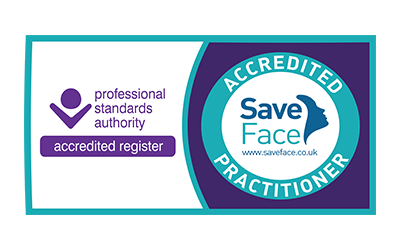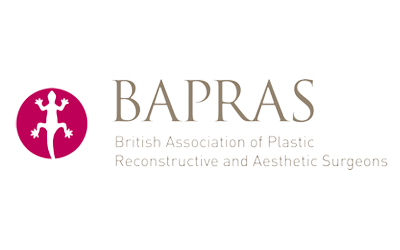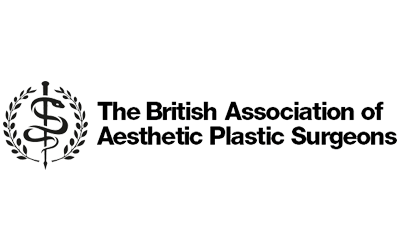An eyelid lift can transform the ageing eye, removing excess skin and fat and strengthening the muscles. It is often performed in combination with other facial rejuvenation procedures to produce the optimal outcome. Here are some of our most frequently asked questions we get asked at our eyelid lift consultations. If you’d like any more information, call 02037 335839 to speak to one of the team or arrange a consultation.
Quick Links
FAQs for Cosmetic Eye Surgery (Blepharoplasty)
The best patients are those who are healthy, psychologically stable and well-motivated. Most are 35 or older, but if puffy, baggy or hooded eyelids run in your family, you may decide to have eyelid surgery at a younger age.
During your consultation Mr. Karidis will ask you about your general medical history to identify any medical conditions that may increase the risk to blepharoplasty surgery such as thyroid disease, high blood or eye pressure, bleeding disorders, or tear production disturbances such as watery or dry eyes.
Blepharoplasty surgery usually addresses any overt hooding or puffiness of the tissues around the eye. It can effectively reduce or remove any bagginess or looseness in the eyelid region.
It can also help dark circles in situations where these are caused by shadowing due to excess fat in the eyelids. Moreover it will also help to increase the amount of eyelid showing in the upper eyelid region where this has been reduced due to excess skin folds.
It won’t however remove or reduce crow’s feet or laughter lines at the side of the eyes or change the position of your eyebrows. Furthermore it will not improve any puffiness or bagginess on the cheek or cheekbone area(called Malar bags). Revision blepharoplasty is a form of eyelid surgery that focuses on correcting poor results from a previous blepharoplasty.
The most important aim in this surgery is to leave the patient looking as natural as possible and not overdone. On the upper eyelids, the incision is carried out in the natural crease line that occurs approximately 1 cm above the eyelashes. The incisions sometimes may extend into the crow’s feet or laughter line area at the outer corners of your eyes.
Surgery here is designed to correct both the excess skin and the excess fat. After making the incisions, the excess skin and muscle is trimmed from the upper eyelids together with any fat, which is usually present on the area adjacent to the sides of the nose. The incisions are then closed with very fine sutures. It is important to remember that you cannot remove all skin in this region because some skin always need to remain behind after this surgery in order to allow good closure of the eyelids!
On the lower eyelids, the technique very much depends on the patient’s individual circumstance and requirements. Therefore if the problem is mainly prominent lower bags without excessively loose skin, you may have what is termed as a transconjuctival blepharoplasty. In this procedure the incision is made inside your lower eyelid, leaving no visible scar. In this instance excess fat is carefully removed.
Alternatively, when loose skin needs to be trimmed, the incision starts underneath the eyelashes and extends 1 cm or so outwards into the crow’s feet area. The skin is then lifted upwards and outwards, gently tensioning the area and overlapping skin removed. Before suturing, any bleeding points are meticulously stopped.
Indeed you can combine other procedures with a blepharoplasty. As the ageing process usually affects the entire face, many patients opt to have their face, neck or brow lifted at the same time as well. This way you will be able to make a more efficient use of your recovery period by recovering from a number of procedures at the same time.
Many patients come to the clinic requesting upper eyelid surgery to improve the contour and appearance of hooded skin they see and perceive in the upper eyelid region. The majority of these patients certainly do benefit from upper eyelid surgery. However there are a proportion of patients who experience heavy upper eyelids as a result of drooping eyebrows.
As a result of the close proximity of the eyebrows to the upper eyelids, any sagging eyebrow skin can in fact make your upper eyelid skin also look heavier or sag. If this is the case then this will be pointed out to you at the consultation. In these patients either a brow lift on its own or a combination of upper eyelid and brow lift surgery will be required to make the appropriate improvement. This of course will be discussed at surgery.
Blepharoplasty usually takes between 30 and 60 minutes depending on the extent of surgery and whether the upper or lower eyelids (or both) are performed. The upper eyelids take about 25 minutes to perform while the lower eyelids usually takes slightly longer to perform – about 40 minutes.
When you return to your room you will find yourself propped up in bed in order to reduce swelling. In addition you will have cold compresses applied to the eye region and be carefully observed for the first 3 to 4 hours, to ensure that no excess bleeding occurs which may spoil the final result of your surgery.
Both upper and lower eyelid stitches consist of a single very fine thread beneath the skin surface running along the wound. There will be small strips of tape over the bridge of the nose and along the outer corners of the eyes to hold down the ends of the stitches. The sutures are usually removed in 3-4 days. In the transconjuctival technique mentioned previously, there are no sutures used.
You should expect the application of an antiseptic eye ointment postoperatively which will be continued with antibiotic eye drops in the days to come. This may blur your vision initially but it soon clears. A large pair of sunglasses will help to hide the effects of surgery. After your discharge please read and follow the postoperative instructions carefully.
Following your eyelid surgery you will experience swelling, tightness and bruising around the eyes to varying degrees. Generally speaking there is usually more swelling and bruising with lower eyelid surgery than with upper eyelid surgery. There is frequently slight leakage of blood from the incisions, and your eyes may be gummy for a week or so, all of which can add up to a disturbing and scary postoperative picture.
Furthermore the eyes will probably look uneven and over pulled in the corners. This is normal as there are internal stitches placed giving rise to this, in an attempt to support he eyelids through the swelling and bruising. Do not be alarmed. This always settles, however may take a few weeks before it is completely resolved. The eyelids should be gently splashed with water and not rubbed in any way.
The majority of the swelling usually subsides after the first 10 days postoperatively. Bruising however may persist for a longer period, even up to one month in some cases. Elevation of the head, avoidance of any stooping and the use of cold compresses reduce the swelling and bruising.
Scars will form as a result of the eyelid surgery. Thankfully however blepharoplasty scars heal relatively well. Generally all scars are somewhat red in the first couple of months. These then gradually fade over a period of about 6-9 months.
In the upper eyelid, the scars are tucked into the base of the natural fold or crease of the upper eye socket and difficult to spot. However variations in the healing processes do occur from individual to individual. The scars of the lower eyelids are situated just below the lower eyelashes and almost always heal with a near invisible line after several months have passed.
Those extending out into the crow’s feet area can sometimes become a little reddened and lumpy requiring perhaps a little longer to settle completely.?Massaging and caring of these scars will speed up the maturation process and will be recommended in all cases at your follow up appointments.
Generally speaking, eyelid surgery is not considered a very painful procedure. Of course your eyelids will probably feel tight with some mild stinging as the anaesthetic wears off and it is normal for this to continue for a few days afterwards.
Mild painkillers such as paracetamol usually control this. A number of patients may experience a feeling of numbness or even tingling in the eyelid region. This is to be expected and normal sensation usually returns quite quickly in a matter of weeks. However, rarely, this may be delayed and may take a few months.
The effects of blepharoplasty surgery are permanent in that the skin that was removed does not return or grow back. However the ageing process does not stop with this or any other surgery and therefore you are likely to age and develop laxity around the eyes in the years to come.
In general however, most people who have had previous blepharoplasty operations do not require similar surgery again for at least 10-12 years.
All surgery carries some uncertainty and risk. When a blepharoplasty is performed by a qualified Plastic Surgeon, complications are infrequent and usually minor. Still, individuals vary greatly in their anatomy, their physical reactions, and their healing abilities, and the outcome is therefore never completely predictable.
Complications that can occur include: Haematoma (a collection of blood under the skin that sometimes must be drained by the surgeon), minor infections, scar lumpiness and distortion (usually temporary). With lower eyelid surgery in particular, lowering or irregularity of the lower eyelid (depending on the degree, termed scleral show or ectropion) can sometimes occur as a result of the pulling effects of scar tissue in some people.
This is unpredictable and may only occur in one eye. As a result, slight changes in the shape and size of the eye may be noticed. Although this is usually temporary, if it’s noticeable, it can be somewhat distressing to patients. Massaging usually reduces the chance of this happening. If it does occur however then more intense massaging to the lid, and even application of some taping will help alleviate this problem.
You will be instructed accordingly in the follow-up clinic. In these circumstances it may take up to two to three months to correct. Very rarely however, if conservative treatment is unsuccessful, then surgical correction may be required. Transient watering of the eyes to varying degrees can also occur following blepharoplasty surgery. Conversely, dryness of the eyes has also been reported.
Although this is usually temporary and diminishes with time it can very occasionally be long lasting or very rarely permanent. You will be instructed as to what measures will be needed if this does occur. Although every effort is made to preserve the eyelashes, very rarely hair loss may occur in the lower eyelash area adjacent to the incision.
This occurrence is not predictable. This hair loss may be temporary or permanent. Loss of vision, although extremely rare (approximately 1:100,000 incidents) is possible. Mr. Karidis has never encountered this complication in his career, nor does he expect to. Tiny whiteheads may also occasionally appear under the skin at the site of the sutures, after your stitches are taken out.
These usually settle on their own, however if they don’t they can be removed easily with a very fine needle in the outpatients department. You can reduce all your risks by closely following Mr. Karidis’ advice both before and after surgery.
There are a number of treatments that can complement the results of a blepharoplasty. Oxygen infusion around the eyes can brighten, radiofrequency can plump and lift and Botox and intradermal fillers can also be used to refine results.
There is no reason why you couldn’t fly a few days after your surgery once your sutures are removed. In the early days however you may want to go through the airport terminals wearing a large pair of sunglasses to avoid any unwanted looks from fellow passengers!
In accordance with the National Healthcare commission guidelines, according to the last five years of annual audit figures submitted to the Hospital of St. John and St. Elizabeth in London, Mr. Karidis performed on average 350 eyelid operations per year. In the last 10 years he has performed over 3000 eyelid operations.
It would be a good idea to prepare yourself looking a little scary in the first 4-5 days, particularly if you have had your upper and your lower eyelids done! Generally speaking the lower eyelid surgery takes longer to recover than upper eyelid surgery. You should however be able to read or watch television reasonably comfortably after 2-3 days.
Contact lenses should be avoided for 2-3 weeks, and even then may feel uncomfortable for a while. It is advisable to plan on taking it easy for the first week after surgery. During this time get plenty of rest and allow your body to spend its energy on healing. With upper eyelid surgery, you should be able to go back to work by 5-7 days.
As stated above, lower eyelids take more time to settle and therefore you probably would need about 10-14 days off. However, you must understand that everyone is different in their healing responses and therefore some people may need significantly longer which could mean 3 or even 4 weeks off in a minority of cases. Bruising can be masked with light makeup.
You may also be sensitive to sunlight, wind and other irritants for several weeks, so you should wear sunglasses and a sunblock when you go out. It is especially important to avoid activities that raise your blood pressure, including vigorous sport, bending or lifting for the first 3 weeks.
Blepharoplasty is the correct medical term used to describe eye surgery, a surgical procedure that corrects any disfigurations, defects or deformities of the eyelids.
When you return to your room, you will have cool gauze applied to the eye area to minimize swelling and bruising. It is also very soothing. Your eyes may feel slightly gritty and vision may be slightly blurry. This is often as a result of eye ointment used post procedure. Most patients do not report pain post-operatively.
All surgery carries some uncertainty and risk. When a blepharoplasty is performed by a qualified Plastic Surgeon, complications are infrequent and usually minor. Still, individuals vary greatly in their anatomy, their physical reactions, and their healing abilities, and the outcome is never completely predictable.
Complications are not common however can include: Haematoma (a collection of blood under the skin), minor infections, scar lumpiness. Some patients will experience some minor ocular inflammation (chemosis) for a short period of time following surgery. This often resolves quickly without the need for intervention.
A surgeon fee, anesthetist fee and hospital fee will be required. You will be given a breakdown of these costs on the day of your consultation.
After your operation you may feel a little drowsy from the anaesthetic and other medications. Therefore we strongly suggest that, if possible, you nominate a friend or family member to collect you. Alternatively, we can assist you in booking a taxi whilst you are in hospital.
We look forward to seeing you at the clinic around 3 – 4 days after your surgery to remove any stitches, review your results and advise you accordingly. Providing all is well, you will usually see Mr. Karidis at around 4 weeks post operation for a routine check up. Further appointments can of course be made if necessary.
It is always useful to allow yourself plenty of time to recover and organise sufficient time off work. 2 weeks should give you sufficient time to allow any obvious bruising and swelling to subside. A little make up may be required at that point to cover any remaining bruising. Ensure any blood tests or other tests that are required are undertaken well in advance to avoid any potential delays.
Please ensure you notify medical staff of any excessive swelling, bleeding, persistent high temperature (above 37.5 degrees for 12 hours or more) or uncontrollable pain. Most often there is nothing to be concerned about, however, it is always best to check!
There are many treatments that will compliment the results of a blepharoplasty. Oxygen infusion around the eyes can brighten, radiofrequency can plump and lift and Botox can be used to refine results.
Blepharoplasty is one of the most popular aesthetic surgery procedures. The chances are excellent that you’ll be happy with your surgery, especially if you realise that the results may not be immediately apparent.
The combined positive results of a fresher look to your eyes whilst reducing their tired appearance will benefit your self-esteem and confidence and should last for years. But always remember the procedure can never halt the ageing process. The clock can be turned back but you cannot stop it ticking altogether.


